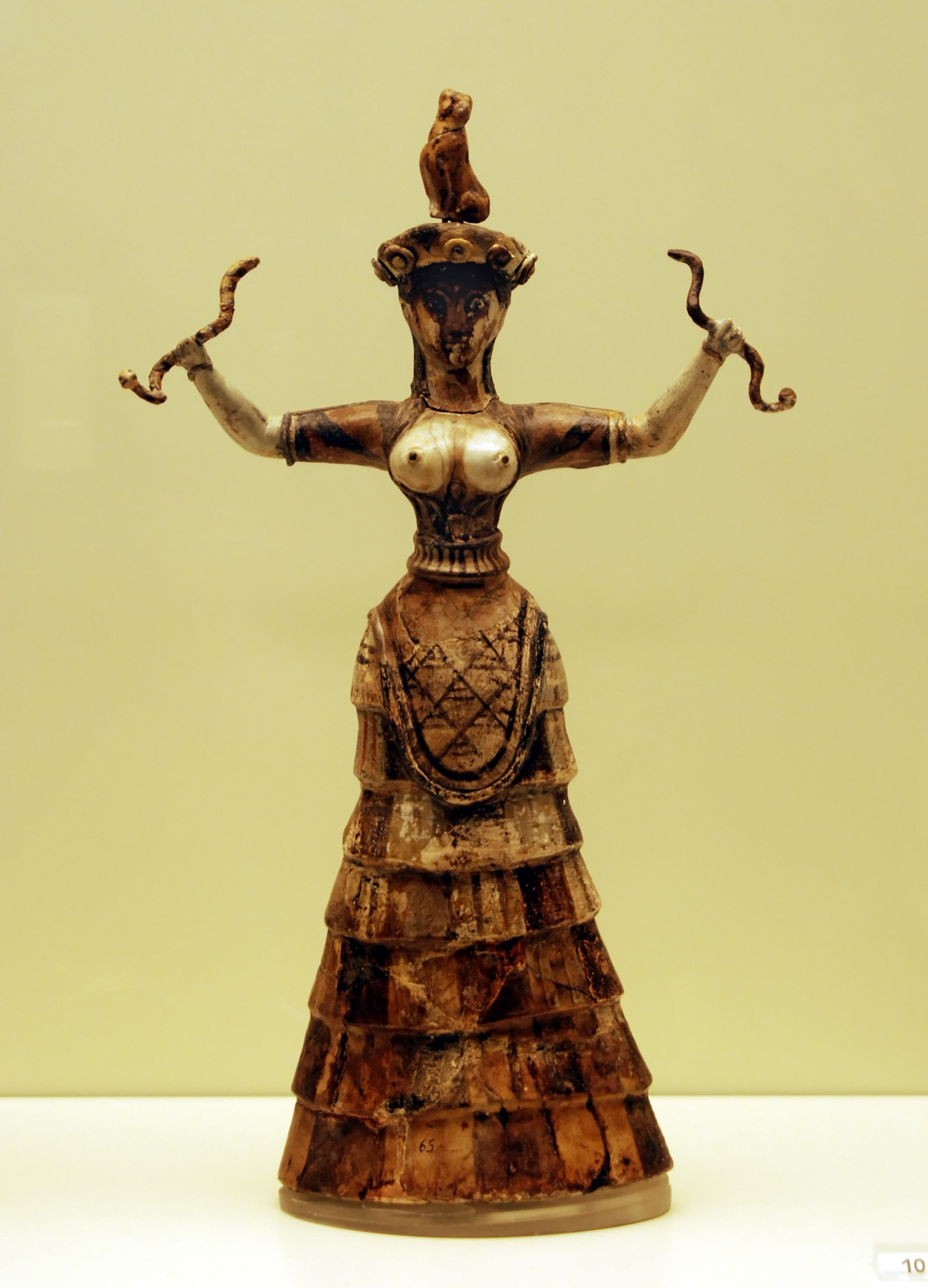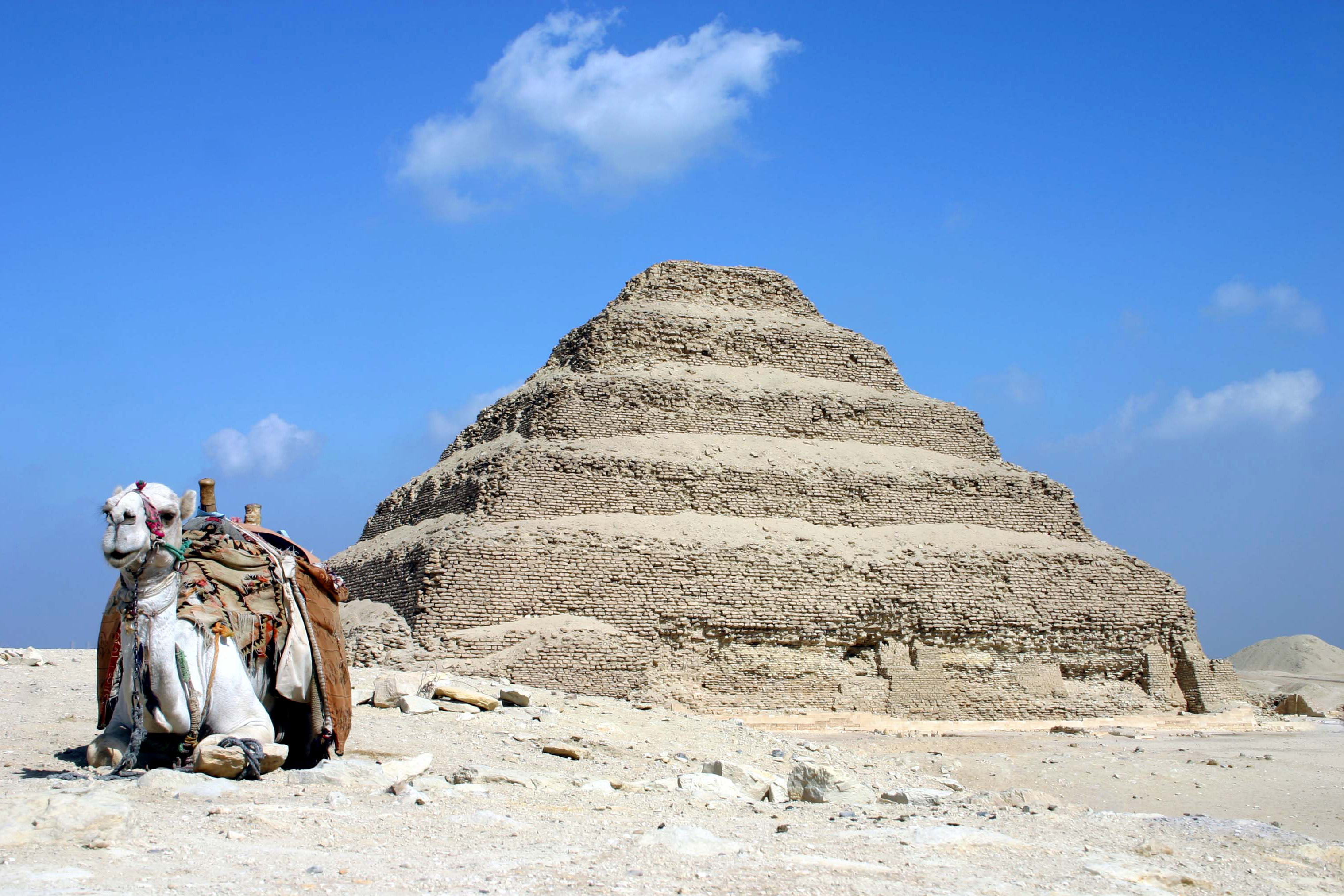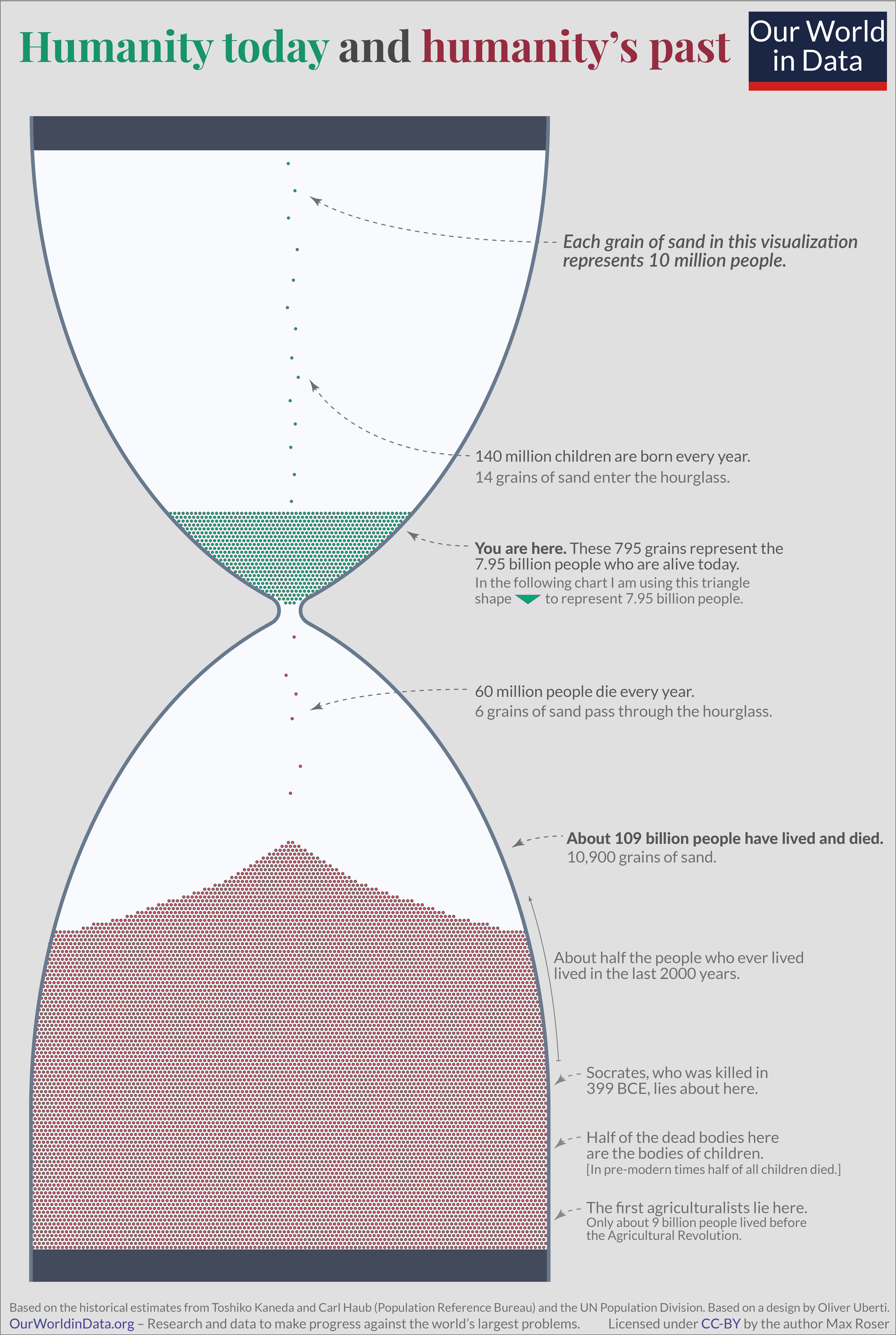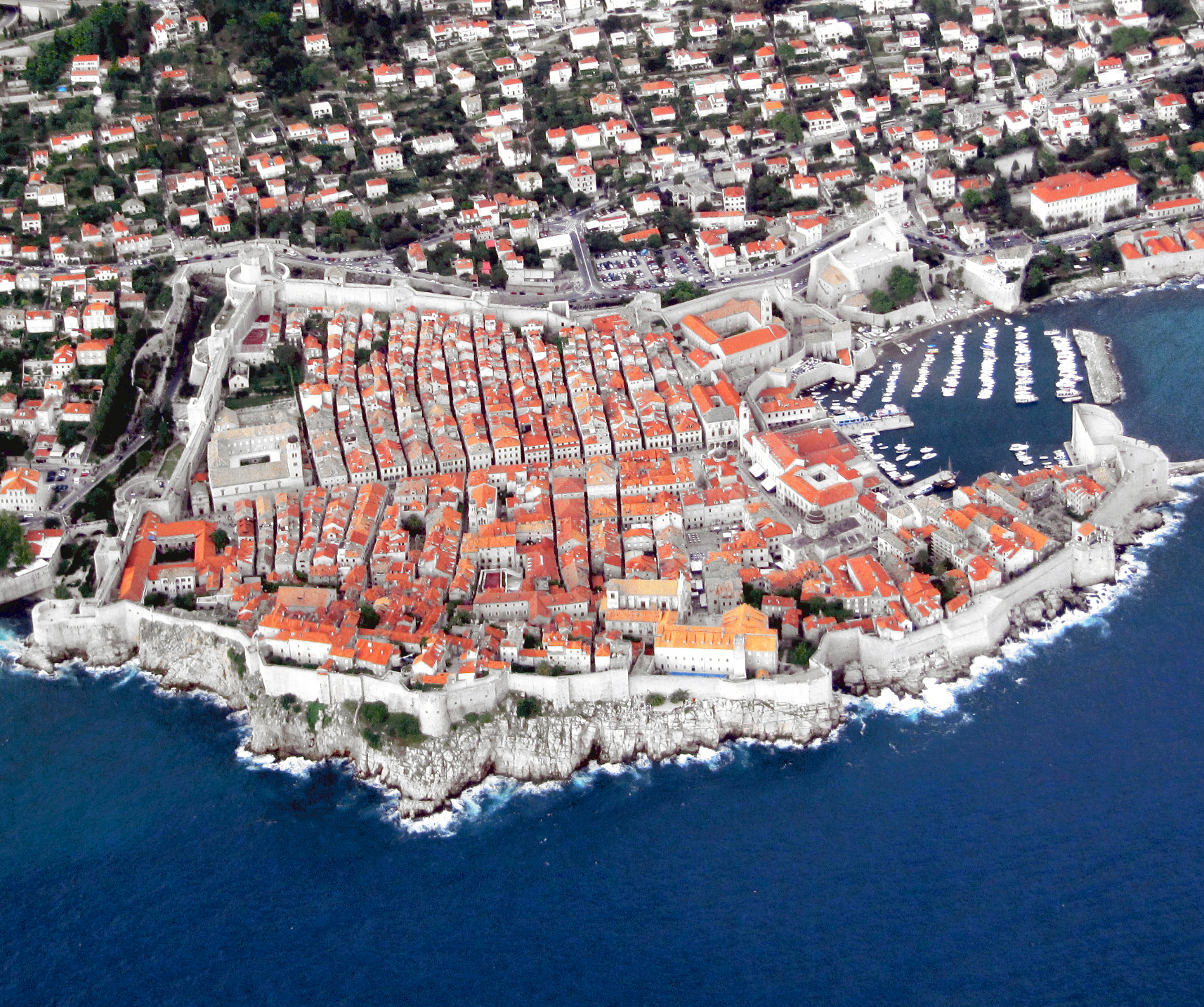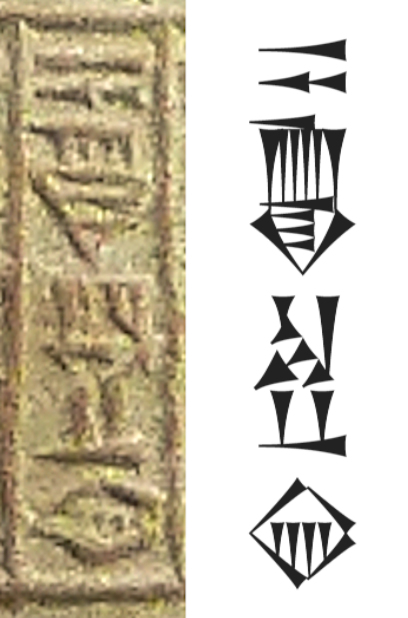|
3rd Millennium BC
File:3rd millennium BC montage.jpg, 400x400px, From top left clockwise: Pyramid of Djoser; Khufu; Great Pyramid of Giza, one of the Seven Wonders of the Ancient World; Cuneiform, a contract for the sale of a field and a house; Enheduana, a high priestess and one of the earliest known authors in history; Gudea (Background: Standard of Ur). rect 34 26 474 319 Pyramid of Djoser rect 541 58 802 271 Khufu rect 825 28 1264 297 Great Pyramid of Giza rect 79 352 401 656 Cuneiform rect 572 309 770 665 Enheduana rect 920 320 1157 676 Gudea rect 1 1 1279 719 Standard of Ur The 3rd millennium BC spanned the years 3000 to 2001 BC. This period of time corresponds to the Early to Middle Bronze Age, characterized by the early empires in the Ancient Near East. In Ancient Egypt, the Early Dynastic Period (Egypt), Early Dynastic Period is followed by the Old Kingdom. In Mesopotamia, the Early Dynastic Period (Mesopotamia), Early Dynastic Period is followed by the Akkadian Empire. In what is now Nort ... [...More Info...] [...Related Items...] OR: [Wikipedia] [Google] [Baidu] |
Pyramid Of Djoser
The pyramid of Djoser, sometimes called the Step Pyramid of Djoser or Step Pyramid of Horus Netjerikhet, is an archaeological site in the Saqqara necropolis, Egypt, northwest of the ruins of Memphis.Bard, Kathryn A., and Jean-Philipee Lauer, eds. 1999. "Saqqara, pyramids of the 3rd Dynasty" ''Encyclopedia of the Archaeology of Ancient Egypt''. London: Routledge. 859 It is the first Egyptian pyramid to be built. The 6-tier, 4-sided structure is the earliest colossal stone building in Egypt. It was built in the 27th century BC during the Third Dynasty for the burial of Pharaoh Djoser. The pyramid is the central feature of a vast mortuary complex in an enormous courtyard surrounded by ceremonial structures and decoration. The pyramid went through several revisions and redevelopments of the original plan. The pyramid originally stood tall, with a base of and was clad in polished white limestone. As of 1997 the step pyramid (or proto-pyramid) was considered to be the earliest ... [...More Info...] [...Related Items...] OR: [Wikipedia] [Google] [Baidu] |
World Population Estimates
This article lists current estimates of the world population in history. In summary, estimates for the progression of world population since the Late Middle Ages are in the following ranges: Estimates for pre-modern times are necessarily fraught with great uncertainties, and few of the published estimates have confidence intervals; in the absence of a straightforward means to assess the error of such estimates, a rough idea of expert consensus can be gained by comparing the values given in independent publications. Population estimates cannot be considered accurate to more than two decimal digits; for example, the world population for the year 2012 was estimated at 7.02, 7.06, and 7.08 billion by the United States Census Bureau, the Population Reference Bureau, and the United Nations Department of Economic and Social Affairs, respectively, corresponding to a spread of estimates of the order of 0.8%. Deep prehistory As a general rule, the confidence of estimates on ... [...More Info...] [...Related Items...] OR: [Wikipedia] [Google] [Baidu] |
Egyptian Pyramids
The Egyptian pyramids are ancient masonry structures located in Egypt. Most were built as tombs for the pharaohs and their consorts during the Old Kingdom of Egypt, Old and Middle Kingdom of Egypt, Middle Kingdom periods. At least 138 identified pyramids have been discovered in Egypt. Approximately Nubian pyramids, 80 pyramids were built within the Kingdom of Kush, now located in the modern country of Sudan. The earliest known Egyptian pyramids are at Saqqara, west of Memphis, Egypt, Memphis. Step-pyramid-like structures, like Mastaba 3808 attributed to pharaoh Anedjib, may predate the Pyramid of Djoser built during the Third dynasty of Egypt, Third Dynasty. This pyramid and its surrounding complex are generally considered to be the world's oldest monumental structures constructed of ashlar, dressed masonry. The most famous Egyptian pyramids are those found at Giza Plateau, Giza, on the outskirts of Cairo, Egypt, Cairo. Several of the Giza pyramid complex, Giza pyrami ... [...More Info...] [...Related Items...] OR: [Wikipedia] [Google] [Baidu] |
Egypt
Egypt ( , ), officially the Arab Republic of Egypt, is a country spanning the Northeast Africa, northeast corner of Africa and Western Asia, southwest corner of Asia via the Sinai Peninsula. It is bordered by the Mediterranean Sea to northern coast of Egypt, the north, the Gaza Strip of Palestine and Israel to Egypt–Israel barrier, the northeast, the Red Sea to the east, Sudan to Egypt–Sudan border, the south, and Libya to Egypt–Libya border, the west; the Gulf of Aqaba in the northeast separates Egypt from Jordan and Saudi Arabia. Cairo is the capital, list of cities and towns in Egypt, largest city, and leading cultural center, while Alexandria is the second-largest city and an important hub of industry and tourism. With over 109 million inhabitants, Egypt is the List of African countries by population, third-most populous country in Africa and List of countries and dependencies by population, 15th-most populated in the world. Egypt has one of the longest histories o ... [...More Info...] [...Related Items...] OR: [Wikipedia] [Google] [Baidu] |
Assyria
Assyria (Neo-Assyrian cuneiform: , ''māt Aššur'') was a major ancient Mesopotamian civilization that existed as a city-state from the 21st century BC to the 14th century BC and eventually expanded into an empire from the 14th century BC to the 7th century BC. Spanning from the early Bronze Age to the late Iron Age, modern historians typically divide ancient Assyrian history into the Early Assyrian period, Early Assyrian ( 2600–2025 BC), Old Assyrian period, Old Assyrian ( 2025–1364 BC), Middle Assyrian Empire, Middle Assyrian ( 1363–912 BC), Neo-Assyrian Empire, Neo-Assyrian (911–609 BC), and Post-imperial Assyria, post-imperial (609 BC– AD 240) periods, based on political events and gradual changes in language. Assur, the first Assyrian capital, was founded 2600 BC, but there is no evidence that the city was independent until the collapse of the Third Dynasty of Ur, in the 21st century BC, when a line of independent kings starting with Puzur-Ashur I began rulin ... [...More Info...] [...Related Items...] OR: [Wikipedia] [Google] [Baidu] |
Sargon Of Akkad
Sargon of Akkad (; ; died 2279 BC), also known as Sargon the Great, was the first ruler of the Akkadian Empire, known for his conquests of the Sumerian city-states in the 24th to 23rd centuries BC.The date of the reign of Sargon is highly uncertain, depending entirely on the (conflicting) regnal years given in the various copies of the Sumerian King List, specifically the uncertain duration of the Gutian dynasty. The added regnal years of the Sargonic and the Gutian dynasties have to be subtracted from the accession of Ur-Nammu of the Third Dynasty of Ur, which is variously dated to either 2047 BC ( Short Chronology) or 2112 BC ( Middle Chronology). An accession date of Sargon of 2334 BC assumes: (1) a Sargonic dynasty of 180 years (fall of Akkad 2154 BC), (2) a Gutian interregnum of 42 years and (3) the Middle Chronology accession year of Ur-Nammu (2112 BC). He is sometimes identified as the first person in recorded history to rule over an empire. He was the founder of ... [...More Info...] [...Related Items...] OR: [Wikipedia] [Google] [Baidu] |
City-state
A city-state is an independent sovereign city which serves as the center of political, economic, and cultural life over its contiguous territory. They have existed in many parts of the world throughout history, including cities such as Rome, Carthage, Athens and Sparta and the Italian city-states during the Middle Ages and Renaissance, such as Florence, Venice, Genoa and Milan. With the rise of nation states worldwide, there remains some disagreement on the number of modern city-states that still exist; Singapore, Monaco and Vatican City are the candidates most commonly discussed. Out of these, Singapore is the largest and most populous, and is generally considered to be the last real city-state left in the world, with full sovereignty, international borders, its own currency, a robust military, and substantial international influence in its own right. ''The Economist'' refers to it as the "world's only fully functioning city-state". Several non-sovereign cities enjoy a ... [...More Info...] [...Related Items...] OR: [Wikipedia] [Google] [Baidu] |
Mesopotamia
Mesopotamia is a historical region of West Asia situated within the Tigris–Euphrates river system, in the northern part of the Fertile Crescent. Today, Mesopotamia is known as present-day Iraq and forms the eastern geographic boundary of the modern Middle East. Just beyond it lies southwestern Iran, where the region transitions into the Iranian plateau, Persian plateau, marking the shift from the Arab world to Iran. In the broader sense, the historical region of Mesopotamia also includes parts of present-day Iran (southwest), Turkey (southeast), Syria (northeast), and Kuwait. Mesopotamia is the site of the earliest developments of the Neolithic Revolution from around 10,000 BC. It has been identified as having "inspired some of the most important developments in human history, including the invention of the wheel, the planting of the first cereal crops, the development of cursive script, mathematics, astronomy, and agriculture". It is recognised as the cradle of some of t ... [...More Info...] [...Related Items...] OR: [Wikipedia] [Google] [Baidu] |
Akkad (city)
Akkad (; also spelt Accad, Akkade, a-ka₃-de₂ki or Agade, Akkadian: , also URI KI in Sumerian during the Ur III period) was the capital of the Akkadian Empire, which was the dominant political force in Mesopotamia during a period of about 150 years in the last third of the 3rd millennium BC. Its location is unknown. In the early days of research various unidentified mounds were considered as the location of Akkad. In modern times most of the attention has focused on an area roughly defined by 1) near Eshnunna, 2) near Sippar, 3) not far from Kish and Babylon, 4) near the Tigris River, and 5) not far from the Diyala River – all within roughly 30 kilometers of modern Baghdad in central Iraq. There are also location proposals as far afield as the Mosul area in northern Iraq. The main goddess of Akkad was Ishtar-Annunitum or ''‘Aštar-annunîtum'' (Warlike Ishtar), though it may have been a different aspect, Istar- Ulmašītum. Her husband Ilaba was also revered. Is ... [...More Info...] [...Related Items...] OR: [Wikipedia] [Google] [Baidu] |
Sumer
Sumer () is the earliest known civilization, located in the historical region of southern Mesopotamia (now south-central Iraq), emerging during the Chalcolithic and Early Bronze Age, early Bronze Ages between the sixth and fifth millennium BC. Like nearby Elam, it is one of the Cradle of civilization, cradles of civilization, along with ancient Egypt, Egypt, the Indus Valley Civilisation, Indus Valley, the Erligang culture of the Yellow River valley, Caral-Supe civilization, Caral-Supe, and Mesoamerica. Living along the valleys of the Tigris and Euphrates rivers, Sumerian farmers grew an abundance of grain and other crops, a surplus of which enabled them to form urban settlements. The world's earliest known texts come from the Sumerian cities of Uruk and Jemdet Nasr, and date to between , following a period of proto-writing . Name The term "Sumer" () comes from the Akkadian Empire, Akkadian name for the "Sumerians", the ancient non-Semitic languages, Semitic-speaking inhabitan ... [...More Info...] [...Related Items...] OR: [Wikipedia] [Google] [Baidu] |
Imperialism
Imperialism is the maintaining and extending of Power (international relations), power over foreign nations, particularly through expansionism, employing both hard power (military and economic power) and soft power (diplomatic power and cultural imperialism). Imperialism focuses on establishing or maintaining hegemony and a more formal empire. While related to the concept of colonialism, imperialism is a distinct concept that can apply to other forms of expansion and many forms of government. Etymology and usage The word ''imperialism'' was derived from the Latin word , which means 'to command', 'to be sovereign', or simply 'to rule'. It was coined in the 19th century to decry Napoleon III's despotic militarism and his attempts at obtaining political support through foreign military interventions. The term became common in the current sense in Great Britain during the 1870s; by the 1880s it was used with a positive connotation. By the end of the 19th century, the term was use ... [...More Info...] [...Related Items...] OR: [Wikipedia] [Google] [Baidu] |
Writing
Writing is the act of creating a persistent representation of language. A writing system includes a particular set of symbols called a ''script'', as well as the rules by which they encode a particular spoken language. Every written language arises from a corresponding spoken language; while the use of language is universal across human societies, most spoken languages are not written. Writing is a cognitive and social activity involving neuropsychological and physical processes. The outcome of this activity, also called ''writing'' (or a ''text'') is a series of physically inscribed, mechanically transferred, or digitally represented symbols. Reading is the corresponding process of interpreting a written text, with the interpreter referred to as a ''reader''. In general, writing systems do not constitute languages in and of themselves, but rather a means of encoding language such that it can be read by others across time and space. While not all languages use a writ ... [...More Info...] [...Related Items...] OR: [Wikipedia] [Google] [Baidu] |
